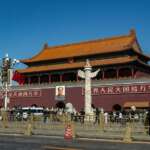A Closer Look at China
China Flag

China Formation Date
October 1, 1949
China Capital Name
Beijing
China Neighbours
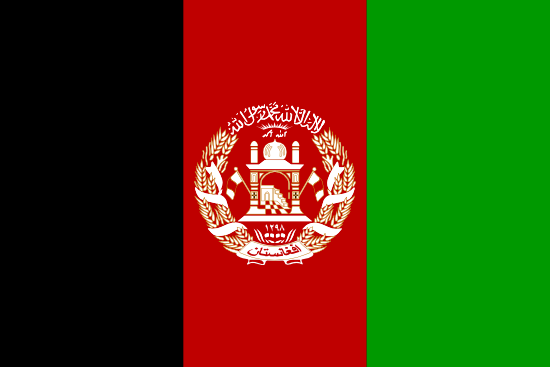 Afghanistan
Afghanistan Bhutan
Bhutan India
India Kazakhstan
Kazakhstan Kyrgyzstan
Kyrgyzstan Mongolia
Mongolia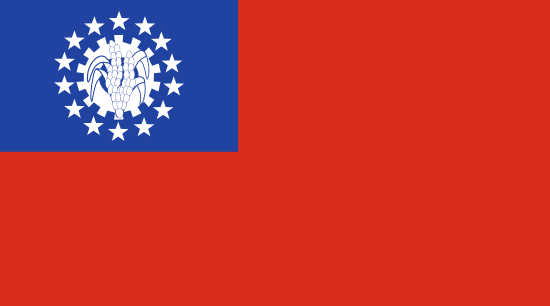 Myanmar
Myanmar Nepal
Nepal North Korea
North Korea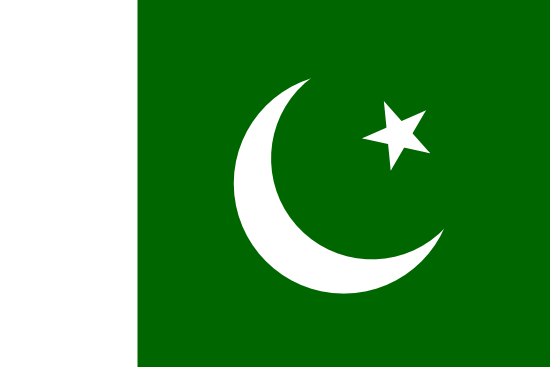 Pakistan
Pakistan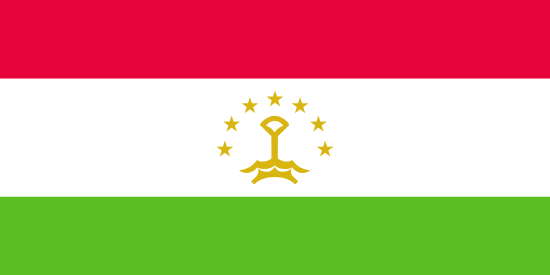 Tajikistan
Tajikistan Vietnam
Vietnam
Exploring China
China: A Cultural and Geographical Marvel
China, located in East Asia, is the world's most populous country with a rich history dating back thousands of years. Its name, "Zhongguo" in Mandarin, translates to "Middle Kingdom," reflecting its central location and cultural significance. As a Cultural Commentator and Travel Writer, I invite you to explore the diverse landscape, ancient traditions, and modern developments of this fascinating country.Key Takeaways:
- China is the world's most populous country with a population of over 1.4 billion people.
- The name "China" comes from the Mandarin word "Zhongguo," meaning "Middle Kingdom."
- China has a rich history dating back thousands of years.
- The country has a diverse landscape, ranging from mountains and rivers to deserts and coastlines.
- Mandarin is the official language of China, but there are many regional dialects spoken throughout the country.
- China is a major economic power with a rapidly growing economy and significant global influence.
Geography:
China is the third-largest country in the world, covering an area of 9.6 million square kilometers. It has a diverse landscape, with mountains, plateaus, plains, deserts, and coastlines. The Himalayas, including Mount Everest, run along China's southwestern border, while the Gobi Desert spans across the northern region. The Yangtze River, the third-longest river in the world, flows through China's central region and is a vital source of water for irrigation and transportation. The country is rich in natural resources such as coal, iron ore, oil, and rare earth metals. It also has a diverse range of flora and fauna, including the giant panda, which is native to China. The climate in China varies from subtropical in the south to subarctic in the north. The country experiences four distinct seasons, with hot and humid summers and cold and dry winters.Origin and History:
China has a long and complex history dating back over 5,000 years. The first recorded dynasty, the Xia Dynasty, emerged around 2100 BCE. The country has been ruled by various dynasties throughout its history, each leaving its mark on the culture and development of the country. In 1911, the Qing Dynasty was overthrown, and China became a republic. However, it was not until 1949 that the People's Republic of China was established under the leadership of Mao Zedong. Since then, China has undergone significant economic and social reforms, transforming into a major global power.Government and Politics:
China is a one-party socialist state governed by the Chinese Communist Party (CCP). The country is divided into 23 provinces, five autonomous regions, four municipalities, and two special administrative regions (Hong Kong and Macau). The CCP holds significant control over all aspects of society and is responsible for making decisions on foreign policy, economic development, and social issues. China has a complex relationship with its neighboring countries and has ongoing territorial disputes with Japan, India, and several Southeast Asian nations. The country is also a permanent member of the United Nations Security Council and plays a crucial role in global politics.Commerce and Economy:
China has the world's second-largest economy after the United States. Its economic growth has been rapid in recent decades, driven by industrialization and investments in infrastructure. The country is a major producer of goods such as electronics, textiles, and automobiles. China is also a significant player in global trade, with strong trade relations with countries such as the United States, Japan, and South Korea. The currency used in China is the Renminbi (RMB), also known as the Yuan.Demographics:
China has a population of over 1.4 billion people, making it the most populous country globally. The majority of the population is Han Chinese, but there are also 55 recognized ethnic minority groups. The population is heavily concentrated in urban areas, with over 60% of people living in cities. The country's aging population is a significant concern, with a declining birth rate and an increasing life expectancy. The government has implemented policies to address this issue, such as the one-child policy, which was recently changed to a two-child policy.Culture:
Chinese culture is diverse and influenced by its long history and various dynasties. Art, music, and literature have played a significant role in shaping Chinese culture. Traditional Chinese festivals, such as the Spring Festival (Chinese New Year) and the Mid-Autumn Festival, are celebrated throughout the country. The Chinese people also have many traditions and customs, including the importance of family and respect for elders. Tea drinking is a popular tradition in China, with tea ceremonies being an essential part of daily life.Languages and Religion:
Mandarin is the official language of China and is spoken by over 70% of the population. However, there are many regional dialects spoken throughout the country, such as Cantonese and Shanghainese. Buddhism, Taoism, and Confucianism are the dominant religions in China, with a small percentage of the population practicing Christianity and Islam. Religion plays a significant role in Chinese society and has influenced many aspects of culture, including art, architecture, and festivals.Education and Healthcare Systems:
China has a high literacy rate, with over 96% of the population being literate. The country has a nine-year compulsory education system, and there are many prestigious universities in China, such as Peking University and Tsinghua University. The healthcare system in China has undergone significant improvements in recent years, with the government investing in healthcare infrastructure and implementing public health initiatives. However, access to quality healthcare is still a challenge for many people, especially those living in rural areas.Sports and Recreation:
Sports play an essential role in Chinese culture, with many traditional martial arts originating from China. The most popular sports in the country include basketball, table tennis, and badminton. China has also made significant achievements in international sports competitions, including the Olympics and the Asian Games. In addition to sports, Chinese people enjoy various recreational activities such as hiking, camping, and visiting historical sites.Tourism:
China has a vast array of tourist attractions, from ancient landmarks such as the Great Wall of China to modern cities like Shanghai. The country's natural beauty can be seen in places like Zhangjiajie National Forest Park and Jiuzhaigou Valley. The Terracotta Army in Xi'an and the Forbidden City in Beijing are also popular tourist destinations. China has a well-developed tourism infrastructure, with many hotels, restaurants, and transportation options available for visitors. The country's high-speed train network is one of the most efficient ways to travel between cities.Travel Information for Foreign Visitors:
Foreign visitors to China must obtain a visa before entering the country. The type of visa required will depend on the purpose of your visit. It is also essential to research local customs and etiquette before traveling to China to avoid any cultural misunderstandings. The official currency used in China is the Renminbi (RMB), and credit cards are widely accepted in major cities. However, it is advisable to have some cash on hand for smaller purchases and in rural areas.Quotes:
- "A journey of a thousand miles begins with a single step." - Lao Tzu
- "The journey of a thousand miles is made up of single steps." - Confucius
- "He who returns from a journey is not the same as he who left." - Chinese Proverb
Summary:
China is a country steeped in history, culture, and natural beauty. From its diverse landscape to its rich traditions and modern developments, there is something for everyone to discover in this vast and fascinating country. As China continues to grow and evolve, it will undoubtedly remain a significant global player in the years to come.China Highest Point Name
The highest point in China is Mount Everest, located at the border with Nepal. It stands 8,848 meters (29,029 ft) above sea level.
China Capital Longitude
116.4074°E
China Capital Latitude
39.9042° N
China Official Languages
The official language of China is Standard Mandarin Chinese, also known as Modern Standard Mandarin, Putonghua or simply Guoyu. Other languages used in China include Cantonese, Wu, Min, and Xiang. There are also many minority languages spoken around the country.
China Ethnic Groups
The People's Republic of China is an incredibly diverse country composed of 55 officially recognized ethnic groups, and a number of unrecognized ones. The largest group, the Han Chinese, make up almost 92% of the total population. Of the other, officially recognized minority groups, the most populous include the Zhuang, Hui, Manchu, Uighur, Miao, Yi, Tujia, Mongol,. Tibetans, Buyei, Dong, Yao, Bai, Korean, Hani, Li, Kazakh, Dai, and She. Each of these groups have distinct languages, religious practices, and lifestyles, and many are still concentrated in specific geographic areas, like the Zhuang in the Guangxi Autonomous Region.
China Religions
China is a multi-religious country. Buddhism is the largest religion in the country, followed closely by Chinese folk religion. Taoism is also widely practiced. Islam and Christianity are the two other major religions, with a small percentage of adherents. Confucianism also has some followers. Other religions such as Hinduism, Sikhism, Jainism, and Zoroastrianism are practiced by some Chinese people as well. In addition, there are some new religious movements such as Falun Gong and Rigenism in the country, with devotees in some parts of China.
China Total Area
China has an approximate total area of 9,596,961 square kilometers (3,705,407 square miles).
China Land Area
9,596,960 km2 (3,705,400 sq mi)
China Water Area
China has an area of 9,596,960 square kilometers of water, including rivers, lakes, reservoirs, and wetlands. It is the fourth-largest country in terms of water area, behind Russia, Canada, and the United States.
China Total Population
According to the Worldometer, as of October 2020 the total population of China is estimated to be 1.44 billion people.
China Currency Name
The official currency of China is the Renminbi (RMB), also known as the Chinese Yuan (CNY).
China Currency Code
The ISO currency code for China is CNY.
China Currency Symbol
The country currency symbol for China is ¥.
China Time Zones
- UTC+08:00
China spans five continental time zones. UTC+8 (Hong Kong Time) is in the east, while UTC+6 (Tibet Time) is in the west. Daylight Saving Time (DST) is not observed. The country’s official time is set to Beijing Standard Time (UTC+8). Generally, each geographic area coordinates with China Standard Time with its local standard time. For instance, in Xinjiang Uyghur Autonomous Region, the standard time is two hours ahead of China Standard Time. Despite DST not being observed, some areas to periodically adjust to Daylight Saving Time. For instance, Hainan Island may adjust its clocks by one hour in March and April each year.
China Calling Code
The country calling code for China is +86
China Internet TLD
www.aveholidays.ca
How to Say "China" In Different Languages?
- Spanish
- China (es-AR)
- Dutch
- China (nl-BE)
- Portuguese
- China (pt-BR)
- Czech
- Čína (cs-CZ)
- French
- Chine (fr-FR)
- German
- China (de-DE)
- Hungarian
- Kína (hu-HU)
- Indonesian
- Cina (id-ID)
- Hebrew
- סין (he-IL)
- Italian
- Cina (it-IT)
- Japanese
- 中国 (ja-JP)
- Korean
- 중국 (ko-KR)
- Dutch
- China (nl-NL)
- Polish
- Chiny (pl-PL)
- Romanian
- China (ro-Ro)
- Russian
- Китай (ru-RU)
- Thai
- จีน (th-TH)
- Ukrainian
- Китай (uk-UA)
- Vietnamese
- Trung Quốc (vi-VN)
China Popular Holidays
- Chinese New Year
- 12 February (26 February)
- Qingming Festival
- 4 April (6 April)
- International Labour Day
- 1 May (3 May)
- International Children's Day
- 1 June
- Dragon Boat Festival
- 7 June (9 June)
- Double Seventh Festival
- 25 August
- Mid-Autumn Festival
- 1 October (3 October)
- National Day Holiday
- 1 October (8 October)
- First Day of the Tenth Month
- 1 November
- Winter Solstice
- 23 December
- Christmas
- 25 December









